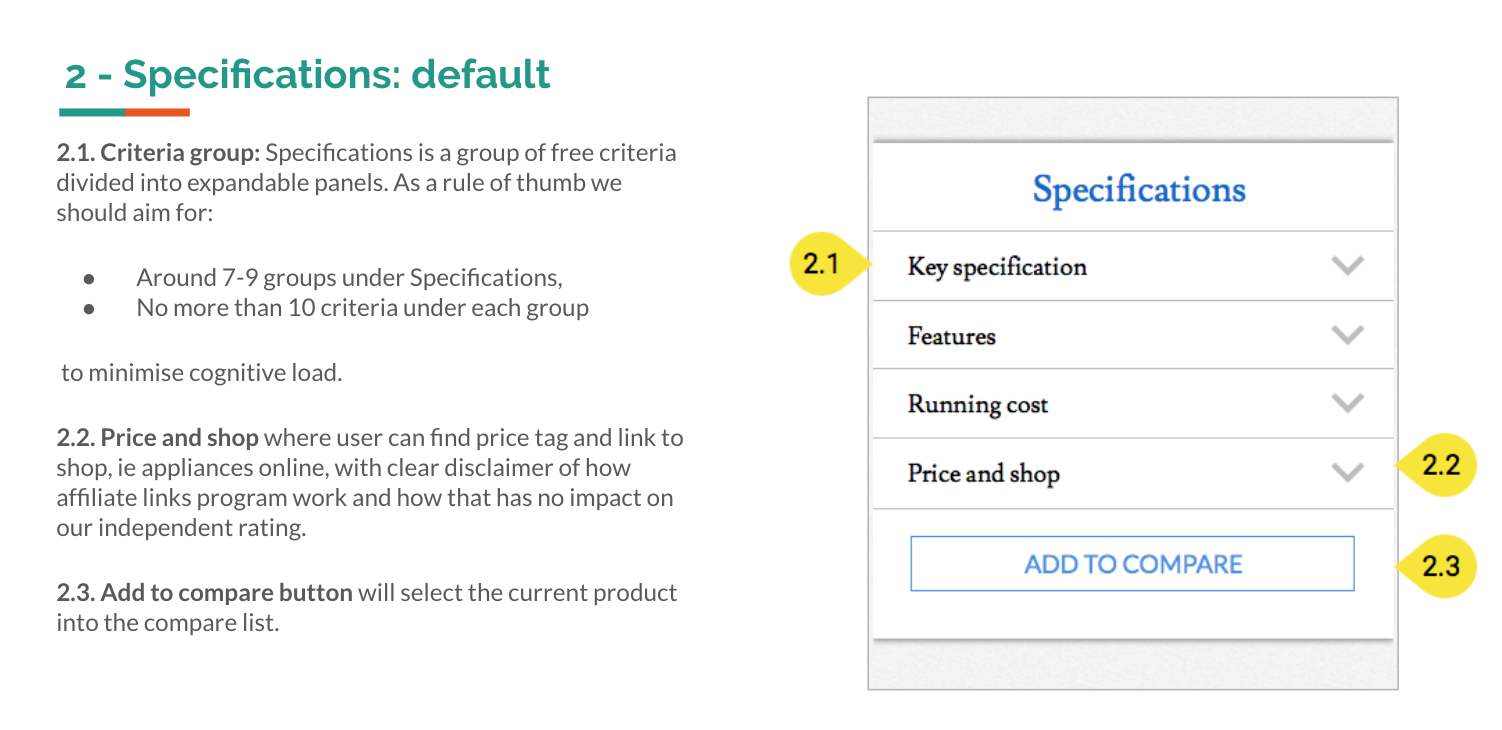Product reviews
Helping users find the best product for their needs
I was part of a team to improve the customer experience with CHOICE’s product funnel pages, especially on mobile.
Highlights:
Increased traffic to reviews page by +28.3% overall
Decreased bounce rate on mobile for buying guide by -28%
Decreased bounce rate on mobile on product review pages by -7.7%
My key achievements
Redesigned the holistic experience of users throughout the purchase journey
Bridged the gap between consumer needs and expert testing
Collaborated with cross-functional team, actively gathered and acted on design feedback
Facilitated user testing and analysed feedback on a regular basis to improve the product experience
Engaged team members in observing user testing session
Delving into the problems
To kick off the project, we ran a collaborative workshop with the core team and key stakeholders. Together, we came to define the customer problems. We posted large printouts of the key templates on the wall.
First, the researcher talked us through the findings from speaking directly to users. Everyone then wrote down the problems from the customer’s point of view on post-it notes. Afterward, we discussed the notes and grouped them into themes.
Discovery phase
Nailing the problems helps our focus in finding the right solutions. I invited developers, content writers, the marketing team and customer service reps to a participatory design workshop. We were sketching out ideas to address the following questions…
How might we…
Showcase the uniqueness of CHOICE’s lab-testing and convince users to sign up to be a member?
Translate technical terms into plain English?
Make information more scannable and focus on the key important tasks on mobile?
Give users the right information at the right time?
Some excellent ideas came out of the workshop. I grouped them into themes, distilled the best ideas to inform the wireframes.
Feedback loop
I presented the wireframes back to the core team and stakeholders in a design huddle. I asked the team to think about feasibility, desirability and viability. Then I gave each 3 dots to vote for features they rank highest and lowest on the three scales. This voting system showed whether the design was on the right track and where it needed more work.
Getting feedback early and often is a great way to build on the best ideas. It also flag issues early and brings people along the design process. I also enjoy the diversity of thoughts that come out of a cross-functional team.
User testing
I’ve tweaked the wireframes based on feedback and took them to user testing. I facilitated the testing and encouraged other people from the team to observe. The testing happened over two days with a day gap to fix any usability issues identified on the first day.
Users on mobile thought the accordions and tooltips intuitive. They found their ways around easily with the sub-nav. The buying guide was regarded as interesting and useful, and now much easier to access and scan.
Build & launch
Changing templates for 300 product groups wasn’t a small feast. We decided to start off with one product group: fridges. We ran a user story mapping session to define our MVP and next releases.
We first rolled out the product sub-nav, enabling users to move between the buying guide, reviews and how we test.
Outcomes
After the launch, we monitored the pages closely for performance. We learned that the new design has:
increased traffic to reviews page by +28.3% overall
decreased bounce rate on mobile for buying guide by -28%
decreased bounce rate on mobile on product review pages by -7.7%
Additionally, the things we’ve uncovered in user testing were invaluable. It sparked conversations in the organisation: how to align testing methods with user needs. CHOICE is planning to roll out the changes to other product groups.







